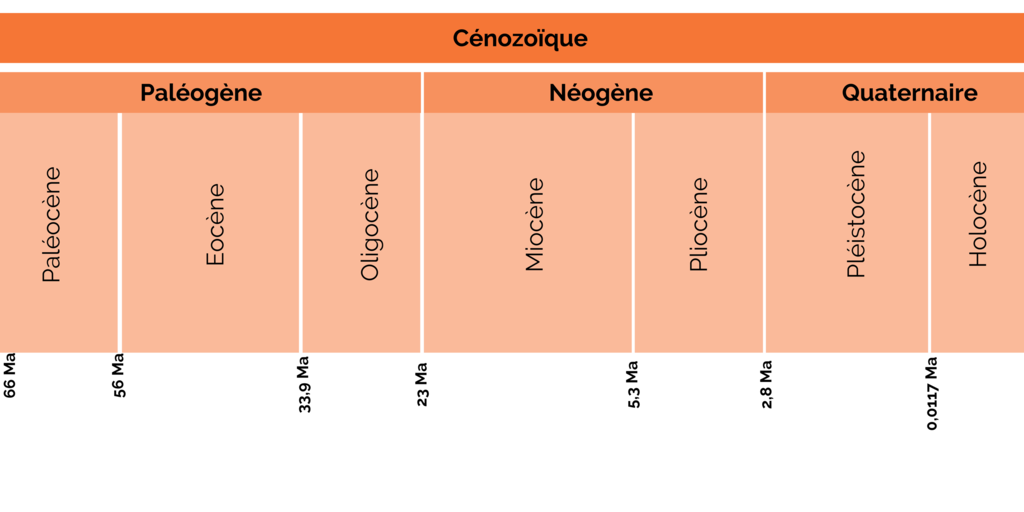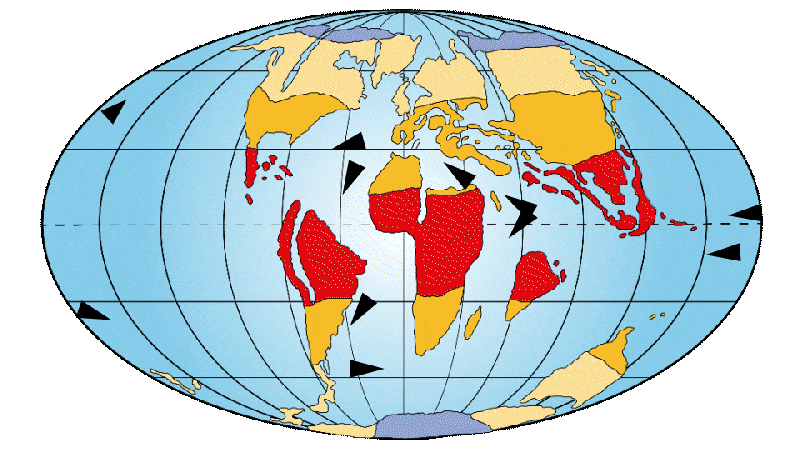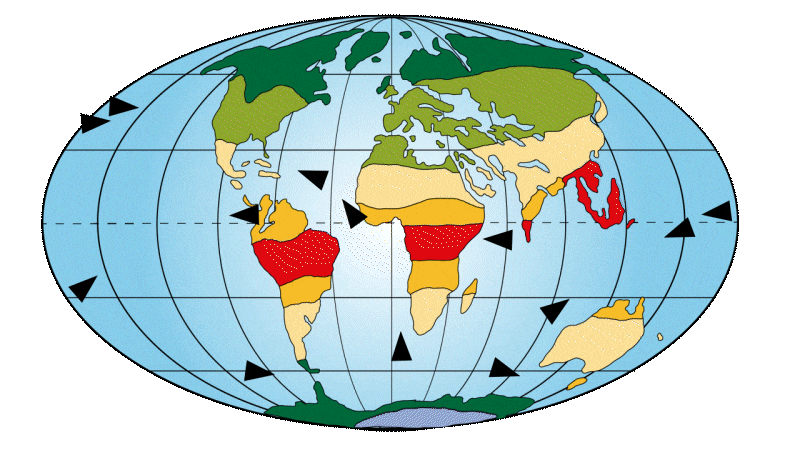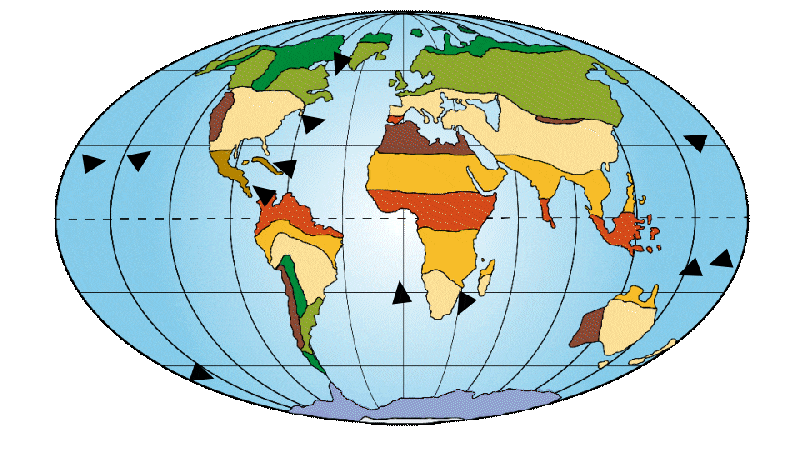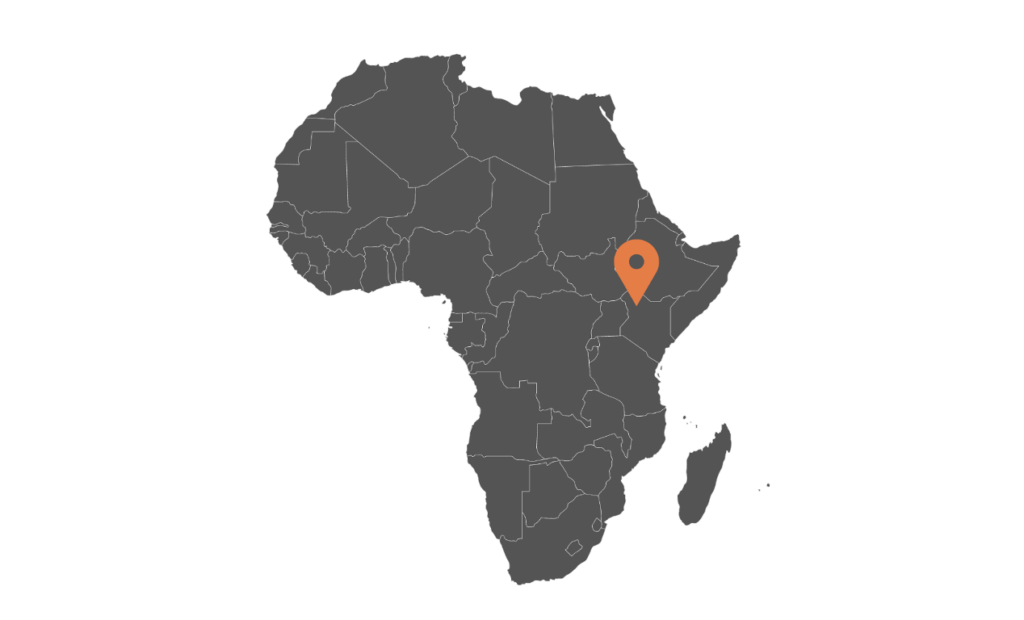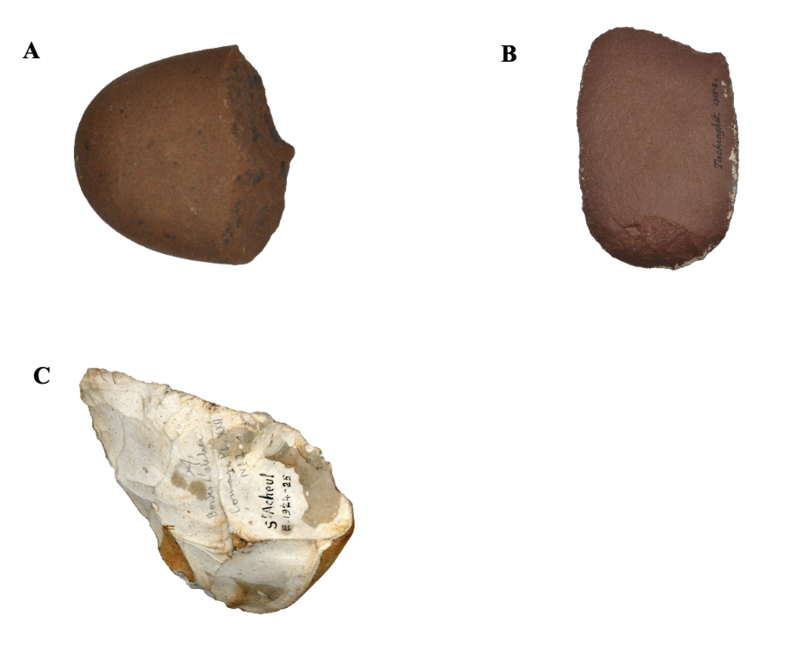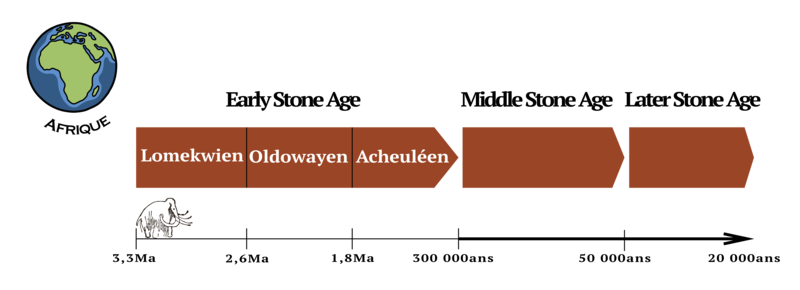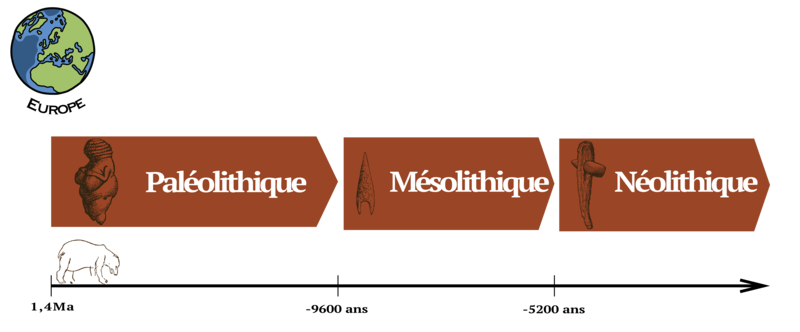
General information on dating methods
It’s important to note that not all materials can be dated. Here is a non-exhaustive list of the types of materials that can be dated:
- Carbonates
- Fossils and paleontological remains
- Sediments
- Volcanic minerals
- Wood charcoal
- Minerals and rocks that have been heated

There are various dating methods, grouped into 4 main families. These methods are applicable to certain types of material only.

Not all these methods can be applied to every object or site. This is because, in addition to the need to find datable material on site, the different methods don’t allow us to date the same time scale. For example, carbon-14 dating cannot be used to date artifacts older than 50,000 years.
The aim here is not to be exhaustive, but to present a few dating methods in greater detail.
Carbon-14
This is probably the best-known dating method. It was developed in the 1940s-1950s.
How is carbon 14 formed?
Carbon 14 (or 14C) is a radioactive isotope of carbon naturally present in the upper atmosphere, where it rapidly converts to 14CO2. This 14CO2, in gaseous form, partially dissolves in seawater, where it is incorporated by certain marine organisms. For example, foraminifera use carbonates to build their shells. 14CO2 will also be incorporated by plants during photosynthesis, as well as by herbivores feeding on these plants. Finally, carnivores also incorporate 14Cvia the herbivores they hunt. So all living organisms made partly of carbon have a certain amount of 14C, including our species. The constant exchanges between an organism and its environment maintain a certain concentration of 14Cin each individual. When the organism dies, exchanges between it and its environment cease, as does the supply of 14C.

After the organism’s death, 14Cconcentration therefore decreases over time, over a period of 5730 years. This means that every 5,730 years, half the atoms of 14Cnaturally disintegrate.
However, beyond 50,000 years, the 14Cconcentration becomes too low for analysis.
So, if you discover a fossil dating back less than 50,000 years, it’s possible to estimate the remaining 14Cconcentration in the fossil and, consequently, determine the age of death of the individual using mathematical formulas.
These calculations depend on the 14Cconcentration in the atmosphere. However, this has not remained constant over time, and has varied over the last 50,000 years. As a result, calibration curves are now used to obtain as accurate an age range as possible. You will then see the notation cal BP, which stands for Before Present. At the time this dating method was being developed, nuclear tests were taking place, which altered the concentration of 14Cin the atmosphere. Consequently, it has been arbitrarily agreed that the present begins in…1950!

Dendrochronology
Dendrochronology involves analyzing the growth of trees by examining their rings. Indeed, in temperate regions characterized by seasonality, the tree produces an annual ring corresponding to its growth period. The size of this ring depends on environmental conditions. So, for example, the ring produced during a dry summer will be thinner than that produced during a rainy summer, since the drought will have hindered the tree’s growth. Throughout its life, a tree records environmental and climatic variations.

Based on this principle, by analyzing large numbers of wood rings, it is possible to create so-called “dendrochronological” time scales. This makes it possible to reconstruct the various climatic fluctuations recorded by the trees and to date them in time for each region. This work is carried out on a regional scale, as each region has specific tree species and climates.
When a piece of wood is found in an archaeological context where the tree rings are still visible, it is possible to match its climatic variation curve to the regional curve and thus date a piece of wood. In this way, we can assign a year to each ring in our archaeological tree.
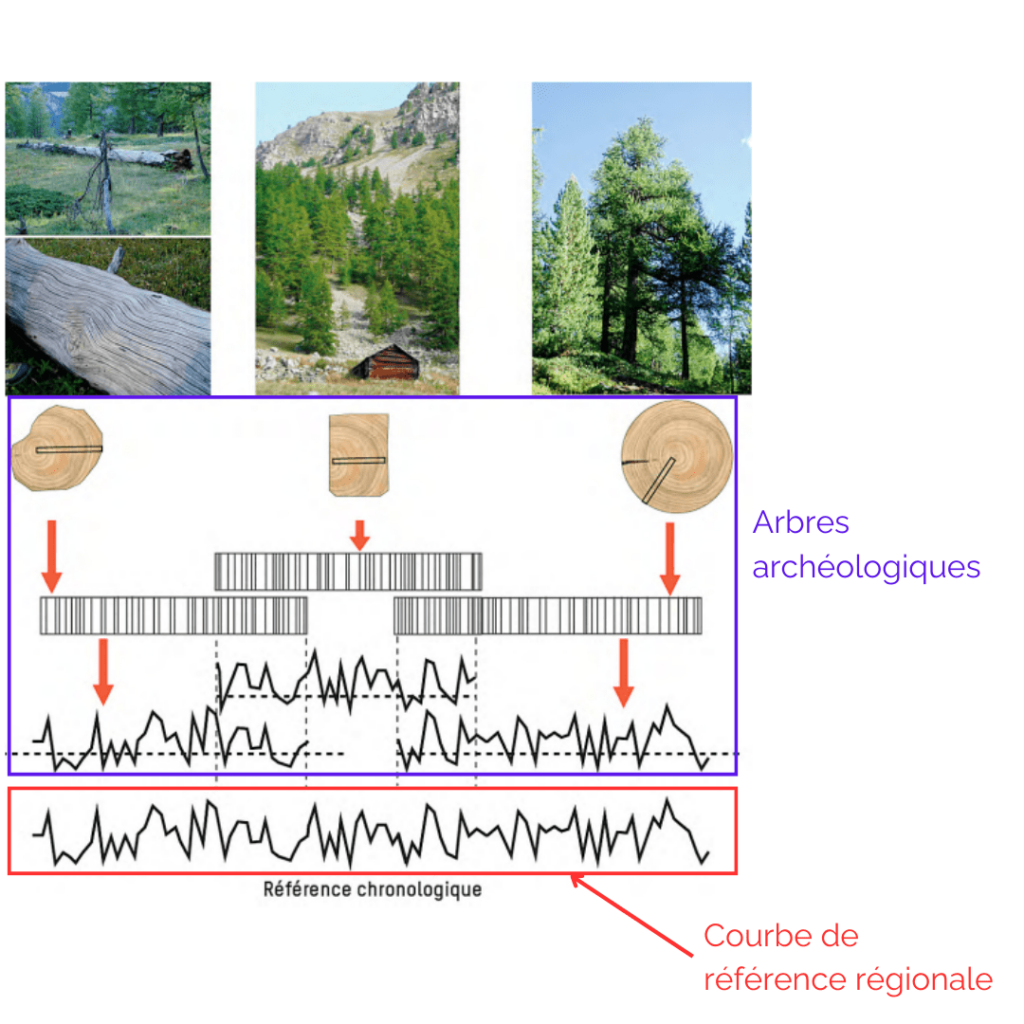
Dendrochronology makes it possible to estimate ages ranging from the present to just over 10,000 years.
Paleomagnetism or sediment dating
There’s a magnetic field around the Earth that acts like a magnet. Over the course of our planet’s history, the orientation of this magnet has been reversed several times. At present, the magnetic field is oriented so that magnetic north corresponds approximately to the geographic north pole. The magnetic polarity is then said to be normal. On the other hand, when the magnetic field reverses and is oriented towards the south pole, we speak of reverse polarity. A chronology of these polarity changes has been established.
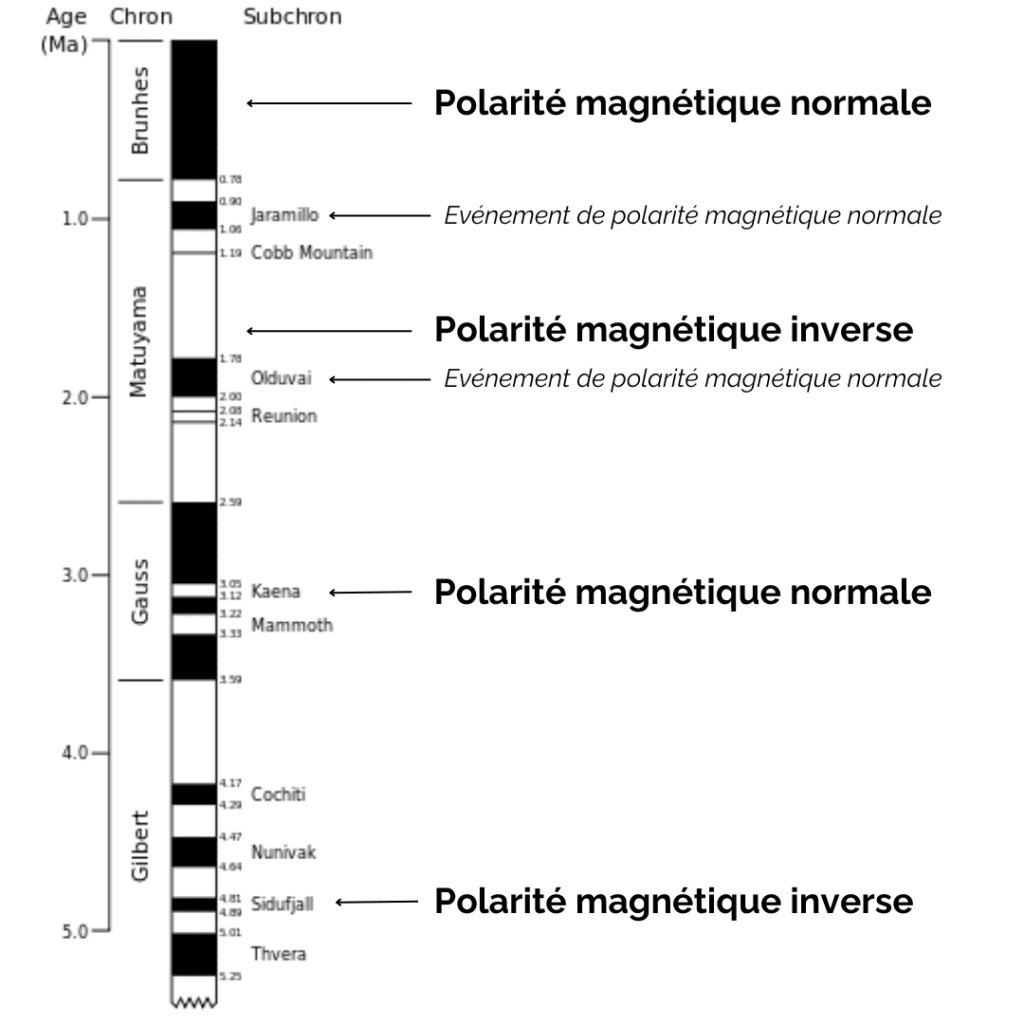
Some rocks, such as magnetite (Fe2O3), are magnetic and act as a kind of compass, recording the polarity of the Earth’s magnetic field as they fossilize.
This chronology of variations in the polarity of the Earth’s magnetic field can be used to determine the age of sediments. For example, if sediments show reverse polarity, we know that they must be more than 780,000 years old, because the Brunhes period, which has normal polarity, began 780,000 years ago.
Paleomagnetism makes it possible to date current samples back several billion years.
We hope you enjoyed this introductory article on dating methods! Feel free to ask us questions and give us feedback on the blog. You can also contact us by e-mail. You can also follow us on Instagram, Facebook, TikTok, Twitter and YouTube!
See you soon,
The Prehistory Travel team.
Bibliography :
[1] Dominique Grimaud-Hervé et al.History of ancestors. The great adventure of prehistoryErrances,5th edition, 2015.
[2] Langouet L. and Giot P.-R., Dating the past. Measuring time in archaeology. GMPCA, Rennes, 1992.




